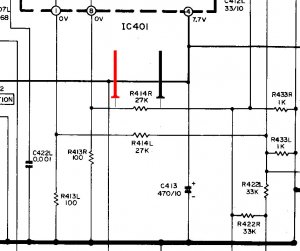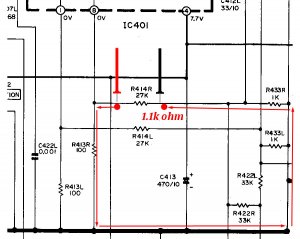Hello,
I recently bought a hitachi 3d7 MKII from ebay, it is in great state: everything works and it looks amazing, scratches are hard to be found. I'm going to install a bluetooth module and a lipo battery (while keeping it original, of course).
When I received it, I noticed all sliders were stuck, a little cleaning and contact grease/cleaner fixed that. But the buzz/noise was still there...
I did some research here on Boomboxery and found what has to be known to isolate the problem:
-it happens on the left and right channel + with headphones
-noticeable when on batteries
-the noise gets louder when turning the volume up
-it can be filtered out using the equalisers
-it is even noticable when nothing is connected (tape deck disconnected from main board, no line-in connected)
-clearly hearable when playing music through the cassette deck or line in.
-the resistance between the ground of the power supply is 0 Ohm to all 'grounds' I measured on the board
-If I touch the ground when it is powered on, there is much more noise (this might be normal?)
Please tell me if I'm wrong:
The issue lays after the power supply and before the equalisers. And maybe even before the 3 different amplifiers (?).
Unfortunately I can't find a service manual to download, does anyone know where to find one ?
Where do you think the problem is most likely to lay ?
Thanks in advance,
ivh
I recently bought a hitachi 3d7 MKII from ebay, it is in great state: everything works and it looks amazing, scratches are hard to be found. I'm going to install a bluetooth module and a lipo battery (while keeping it original, of course).
When I received it, I noticed all sliders were stuck, a little cleaning and contact grease/cleaner fixed that. But the buzz/noise was still there...
I did some research here on Boomboxery and found what has to be known to isolate the problem:
-it happens on the left and right channel + with headphones
-noticeable when on batteries
-the noise gets louder when turning the volume up
-it can be filtered out using the equalisers
-it is even noticable when nothing is connected (tape deck disconnected from main board, no line-in connected)
-clearly hearable when playing music through the cassette deck or line in.
-the resistance between the ground of the power supply is 0 Ohm to all 'grounds' I measured on the board
-If I touch the ground when it is powered on, there is much more noise (this might be normal?)
Please tell me if I'm wrong:
The issue lays after the power supply and before the equalisers. And maybe even before the 3 different amplifiers (?).
Unfortunately I can't find a service manual to download, does anyone know where to find one ?
Where do you think the problem is most likely to lay ?
Thanks in advance,
ivh




